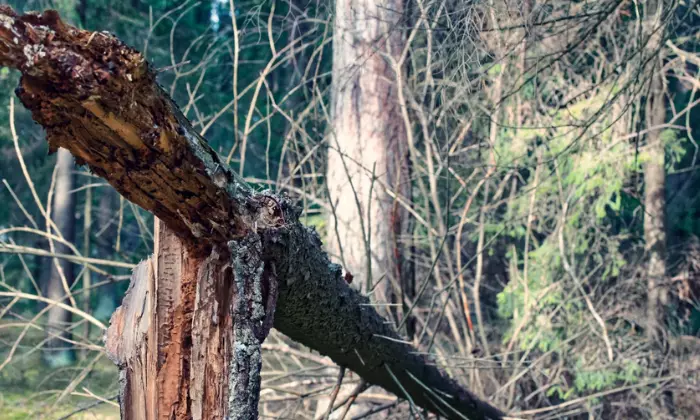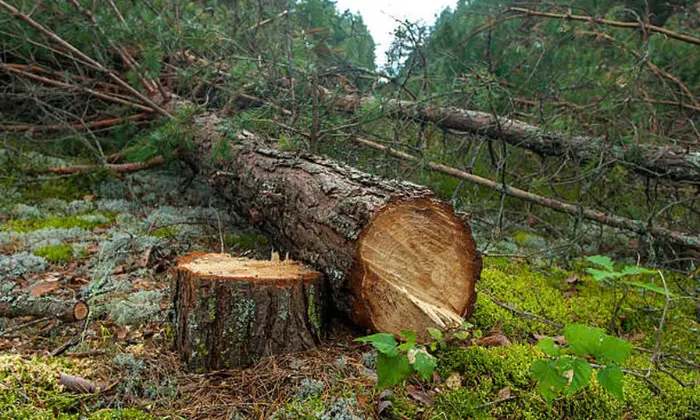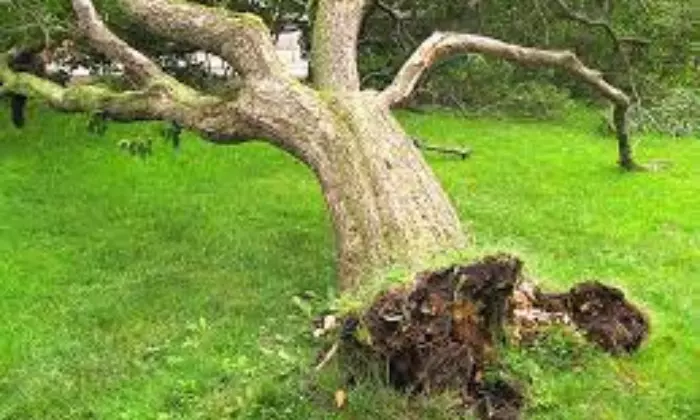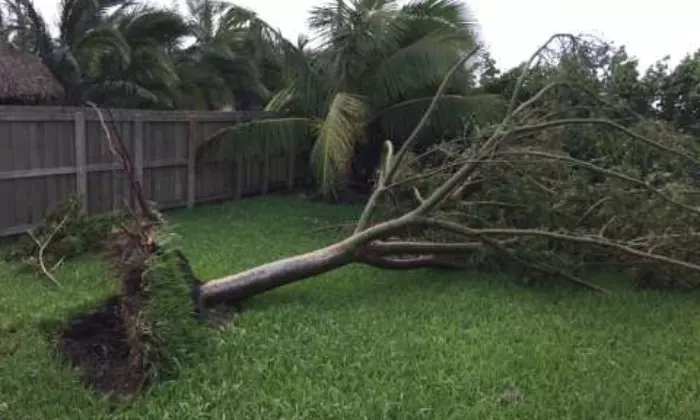Welcome to I Haul Landscape Services, where nature’s resilience meets expert care. Have you ever wondered, Can a fallen tree stand back up? We embark on a journey of restoration, breathing life back into landscapes. With a passion for revitalizing nature’s wonders, I Haul Landscape Services is committed to the art of making fallen trees rise again. Join us in exploring the boundless possibilities of renewal, where every tree tells a tale of strength and revival.
Can a Fallen Tree Stand Back Up?
Can a fallen tree stand back up? In this exploration, we unravel the mysteries of tree resilience, investigating the natural processes and human interventions that contribute to the potential revival of these arboreal giants.
Natural Recovery Processes
Trees possess a remarkable ability to recover naturally from falls.The complex organization of roots, implanted profound inside the dirt, assumes an essential part in settling a tree.After a fall, some species exhibit resilience by gradually adjusting their growth patterns, redirecting energy to reestablish an upright position.
Factors Influencing a Tree’s Ability to Stand Back Up
The success of a fallen tree standing back up depends on several factors.The sort of tree, the degree of harm to its root foundation, and ecological circumstances all add to the probability of recuperation.While some trees may recover effortlessly, others may struggle to regain their footing.
Can a Fallen Tree Be Replanted?

The majesty of a fallen tree evokes a sense of loss, but what if we could turn that narrative around? Can a fallen tree be replanted, breathing new life into a seemingly defeated giant? In this investigation, we unwind the complexities of the replanting system, offering bits of knowledge into the means in question and the circumstances vital for a fruitful revival.
Steps for Replanting a Fallen Tree
Replanting involves careful excavation, root inspection, and strategic positioning. Properly trimming damaged roots and providing adequate support are essential steps in ensuring the tree’s successful transition from fallen to standing.
Ideal Conditions for Successful Replanting
Optimal soil conditions, adequate water supply, and appropriate fertilization are crucial for a replanted tree’s survival. Implementing these conditions fosters an environment conducive to the tree’s adaptation and growth.
Tree Falling Fails
In the intricate dance between nature and human influence, the sight of a tree falling is not merely a spectacle but an event laden with questions. What leads to tree falling fails? This exploration delves into the common causes of trees succumbing to gravity and the human-related factors that amplify the risks, shedding light on the importance of responsible tree management.
Discussing Why Trees Fall in the First Place
Natural disasters, disease, and old age are primary reasons for trees succumbing to gravity. However, human-related factors such as improper pruning, construction damage, and inadequate care amplify the risk of tree falls.
Human-Related Factors Leading to Tree Falling Fails
Negligence in tree care, haphazard construction practices, and ignorance of a tree’s health can lead to catastrophic falls. Acknowledging and addressing these factors are crucial in preventing unnecessary tree casualties.
Can a Chopped Down Tree Grow Back?

The act of chopping down a tree often carries a sense of finality. However, nature, with its resilient spirit, sometimes surprises us with the possibility of regeneration. This exploration examines the conditions under which a chopped-down tree can grow back, unraveling the secrets of nature’s regenerative power.
Exploring Regrowth Possibilities After Tree Chopping
Certain tree species exhibit the ability to sprout new shoots even after being chopped down. Understanding the regrowth potential of specific trees informs decisions on whether to remove or nurture a felled tree.
Techniques for Promoting Tree Regrowth
Applying suitable pruning methods, providing nutrient-rich soil, and protecting regenerating shoots from external harm are essential techniques for encouraging regrowth. Patience and care are key to witnessing the resurrection of a once-chopped tree.
Tree Uprooting

This exploration delves into the underlying causes of tree uprooting and the far-reaching consequences it brings, shedding light on the importance of understanding and mitigating this natural occurrence.
Understanding Why Trees Uproot
Weather events, unstable soil conditions, and improper planting practices contribute to tree uprooting. Identifying and addressing these factors are crucial in minimizing the risk of uprooting.
Consequences of Tree Uprooting for Landscaping
The aftermath of a tree uprooting extends beyond the fallen giant. Soil erosion, damage to nearby structures, and potential harm to other flora in the vicinity highlight the broader consequences of uprooting.
Benefits of Professional Intervention in Landscaping
In the intricate tapestry of landscaping, the role of professional intervention cannot be overstated. Beyond the surface beauty of well-maintained green spaces lies a realm where expertise and strategic care play pivotal roles.
Expert Assessment
Professionals conduct thorough assessments to determine the viability of recovery or replanting.
Strategic Solutions
Implementing strategic techniques for tree stabilization, considering the unique characteristics of each tree.
Efficient Removal
Swift and safe removal of fallen or uprooted trees, minimizing potential risks and further damage.
Tips for Preventing Tree Falls
The grace and grandeur of trees add unparalleled beauty to our landscapes, but ensuring their stability is paramount to prevent potential hazards. This article explores practical tips for preventing tree falls, encompassing thoughtful design considerations and consistent maintenance practices that safeguard both the trees and their surroundings.
Landscape Design Considerations
Adequate Spacing
Ensure proper spacing between trees to prevent overcrowding and competition for resources.
Appropriate Species Selection
Choose tree species that are well-suited to the local climate and soil conditions.
Regular Tree Maintenance Practices
Pruning
Regularly prune trees to remove dead or weakened branches, promoting overall stability.
Inspection
Conduct routine inspections to identify signs of disease, decay, or structural issues.
Conclusion
In conclusion, the journey of a fallen tree is not necessarily a tragic end but an opportunity for renewal. Whether through natural recovery or human intervention, understanding the complexities of tree stability and rehabilitation is essential for preserving our green landscapes.
Frequently Asked Questions
Can Any Fallen Tree Be Replanted Successfully?
While many fallen trees can be replanted, success depends on factors such as tree species, root condition, and environmental support.
How Long Does It Take For A Fallen Tree To Stand Back Up Naturally?
The timeline varies, but natural recovery can take several months to years, influenced by factors like tree type and environmental conditions.
Are There Specific Tree Species More Prone To Falling?
Yes, some species are more susceptible to falls due to factors such as shallow root systems or brittleness.
What Services Does I Haul Landscape Services Offer For Fallen Trees?
I Haul Landscape Services provides a range of services, including emergency tree removal, replanting, and expert assessments.
How Can Individuals Contribute To Minimizing The Environmental Impact Of Fallen Trees?
Responsible tree removal, recycling, and participating in afforestation initiatives are effective ways to minimize environmental impact.

